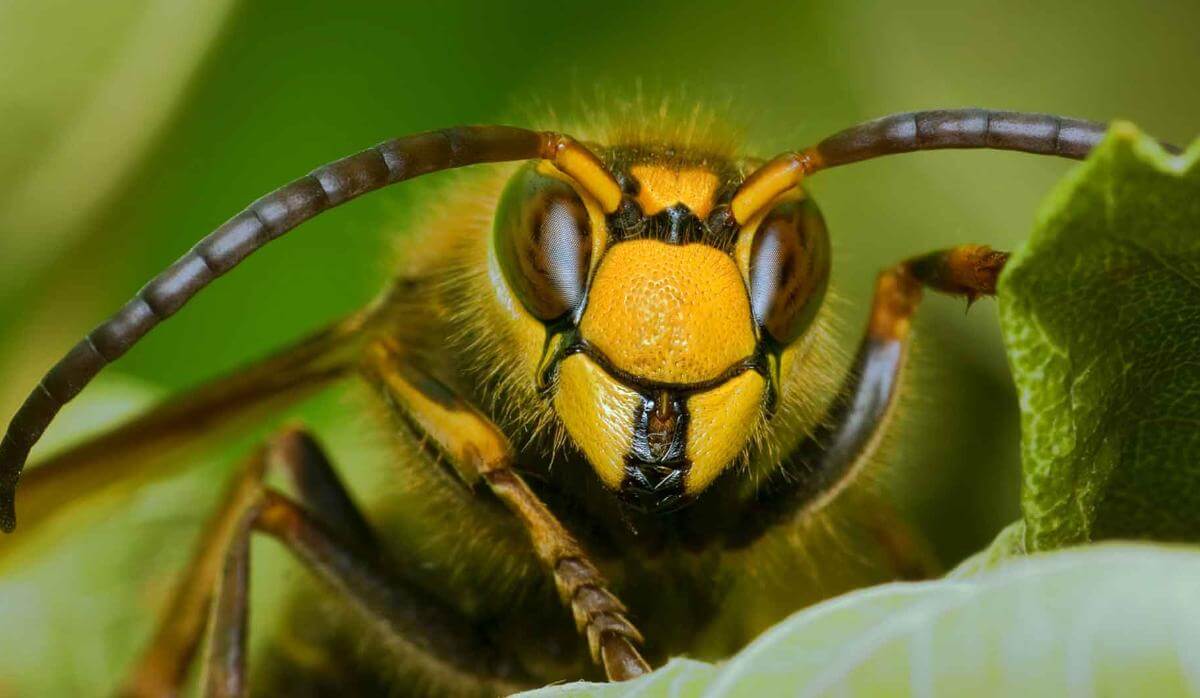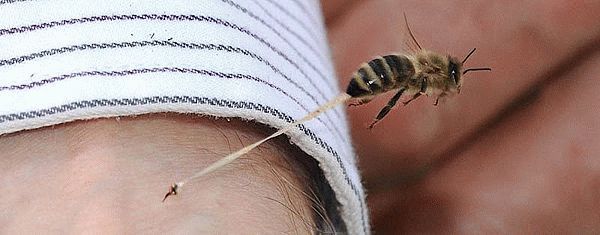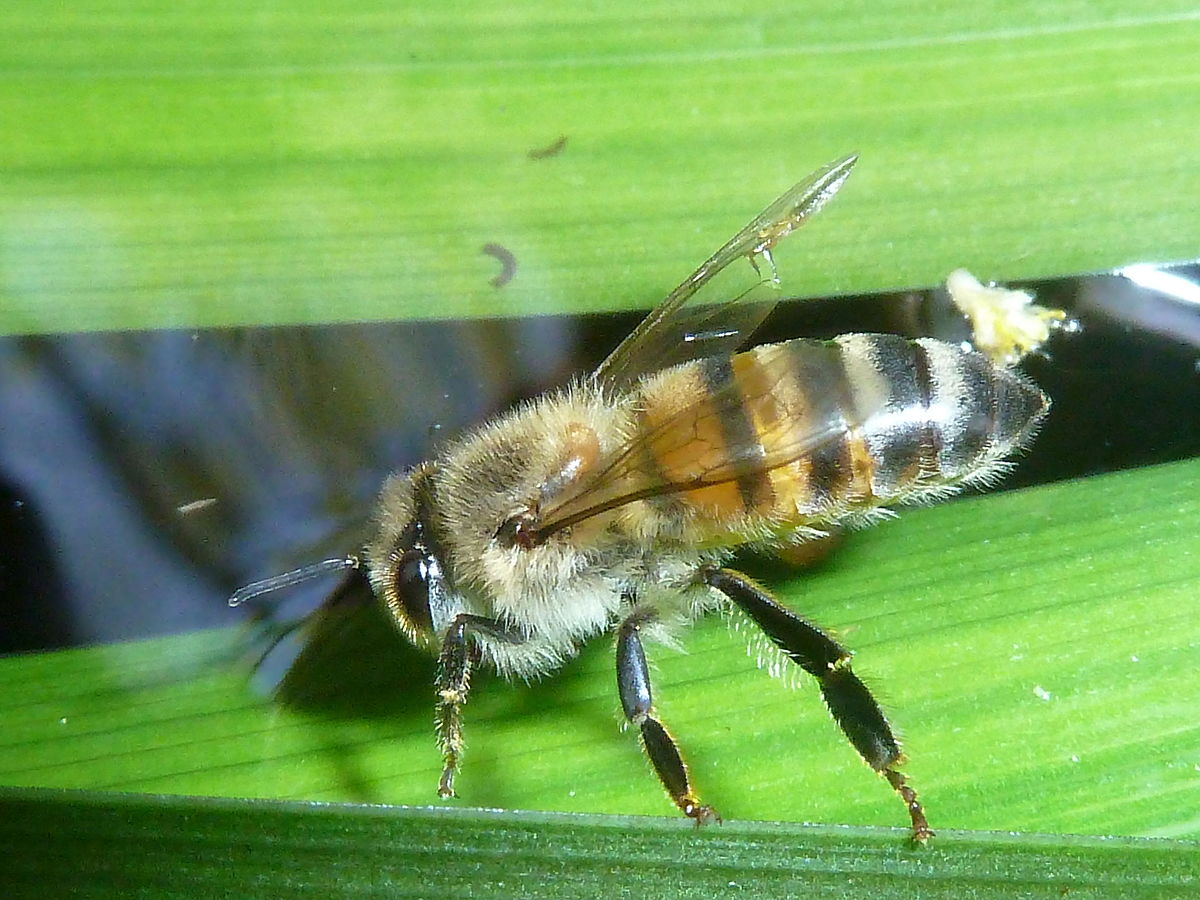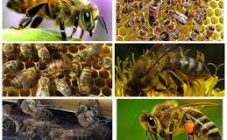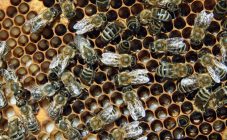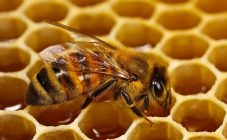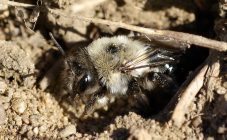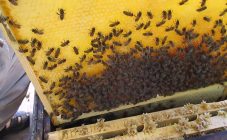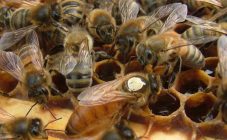Content:
Killer bees are a hybrid of African bees with European bees. It was obtained in 1956 in Brazil as a result of an experiment. Warek Kerr brought more hardy African bees to Brazil from Africa in order to obtain insects adapted to Brazilian climatic conditions by crossing. As a result of an error in 1957, the queens of this subspecies fell into their natural environment, where, when crossed with ordinary bees, they gave numerous offspring.
Features:
They are distinguished from other bees by their large size and aggressiveness. A characteristic feature is the double honey production. In addition, their working day starts earlier and has a longer duration. Also, for the development of these bees, unlike ordinary ones, it takes 1 less day.
From their African parents, they inherited stamina and aggressiveness, physical strength allows them to survive under adverse conditions.
The rules in the bee family are interesting. They contain a queen, drones and worker bees. The queen is large, she lays eggs, from which the larvae develop, which are looked after by worker bees, acting as nannies and educators. Also worker bees collect nectar and pollen.
Habits
Along with these positive qualities, they are dangerous for people, as they are very aggressive and can attack a person with a whole swarm. At the same time, numerous cases of death from the attack of these killers have been recorded. There are several thousand affected people. This is not to mention the dead animals, which are attacked by killer bees when they approach the hive closer than 5 meters.
Appearance
They differ in size from their melliferous counterparts in a larger direction, the sting has the same size. At the end of the abdomen is a stinging apparatus, consisting of a reservoir for poison, a sting and two poisonous glands. When the insect sticks its sting, the muscles begin to contract, it penetrates deeper, the poison pours out of the reservoir and enters the wound.
Danger to humans and animals
After the uterus of a dangerous species was released and gave birth to numerous offspring, several cases of death of people from their bites were recorded.
Such statistics are not accidental, these individuals are aggressive, when compared with ordinary bees, they attack the victim 30 times faster and sting people 10 times more often. If they sense danger, they immediately attack the victim with a whole swarm.
Although their danger is greatly exaggerated, people began to fear, because in the United States alone, about a thousand deaths have been recorded as a result of the attack of these insects. The main cause of death is the development of anaphylactic shock.
Do not forget about the danger of insects for animals. When an animal approaches the hive, a swarm of killer bees attacks it. When an animal tries to flee, insects pursue it. The chase can last at a distance of up to 700 m. At the same time, several thousand cases of death of animals from the stings of killer bees were recorded.
The most dangerous bees in the world
There are a huge number of insects in the world, some of them are dangerous, others are, on the contrary, friendly. Some are very attractive, others are disgusting. Among them there are those that are dangerous to humans.
In addition to the Africanized killer bee, there are several dangerous representatives:
- Hornet, or tiger bee. The territory of his residence is India, China, Asian countries. But there were recorded cases of finding hornets in the Primorye Territory. Quite large individuals - body length up to 5 cm. Moreover, they have a large sting (6 mm) and impressive jaws. Hornets can attack a person for no reason. With their sting, they easily pierce the skin, and the victim on his own cannot escape from the attacker. Third party intervention required. When attacking, the hornet releases poison several times, which is very toxic and causes great harm to human tissues. In this case, the pain is very strong. Every year from 30 to 70 people die from a hornet bite.
- Gadfly. This is not a bee, but an insect very similar to it. People and animals are victims of their attacks. The danger lies in the fact that they deposit larvae on the skin of animals, which, sensing heat, are activated and penetrate under the skin. Sometimes you can even feel their movements. The sensations are quite unpleasant. Numerous cases of death of animals from infection with these parasites have been recorded. You can get rid of the larva with a simple surgery under local anesthesia. In animals, they can simply be squeezed out.
Apis mellifera scutellata is the so-called killer bee, the most dangerous bee. When attacked, it stings several times. The most aggressive among her fellows. Unlike other species, the Africanized bee does not die after releasing a sting, as it is easily pulled out of the victim's body. Their bites are dangerous for women, children and the elderly.
The strength and aggression of the African honey bee
The African wasp is quickly developing new territories, annually increasing its range. At the same time, even the climatic features of the regions do not stop her.
African honeybees can bite humans if they sense danger.
The following can provoke their aggression:
- Bright color;
- Strong smell;
- Flick;
- Strong sound;
- Working mechanisms.
When attacking, it is worth remembering that bees are not afraid of smoke or water. It is not easy to hide from them, they can attack the victim for 8 hours.
The best defense is to avoid the area where the African honeybee colony is located.
